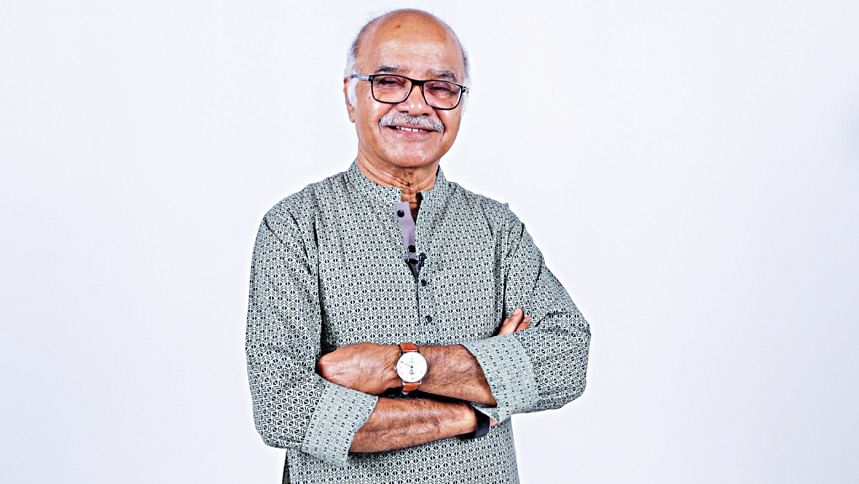Education system fails to create skilled workforce

Bangladesh's education system is failing to produce skilled human resources for industries, leading to rising unemployment among educated youth while industries struggle to find qualified workers, according to economist Selim Jahan.
Jahan, former director of the Human Development Report Office (HDRO) at the United Nations Development Programme (UNDP), New York, said industry skill requirements are constantly evolving.
"As global and domestic market demands shift, industries transition from producing one type of product to another, requiring different skill sets," he told The Daily Star in a recent interview.
"The problem is that our education system does not supply the workforce with the right skills at the right time."
There is a clear mismatch between what the education system produces and what the labour market needs, with many students graduating in fields that offer few job opportunities.
"I won't name specific fields, but there are disciplines where graduates find very limited employment opportunities."
This results in a dual problem -- not only is there a gap between supply and demand but also a misalignment between the nature of supply and demand, according to the economist.
"As a result, industries frequently lament their inability to find skilled personnel, forcing them to hire professionals from abroad for roles in management, technology and engineering," he said.
"Now, the question is that is our education system capable of producing the skilled workforce industries require? No, it is not."
This is because the education system has remained largely unchanged, even as industries and global demands have evolved, said Jahan, who was also a professor of Economics and director of the Economic Research Unit at the University of Dhaka in the 1980s.
For instance, in today's digital age, the demand for IT-based exports is growing three times faster than that for traditional goods. However, Bangladesh's education system -- its curriculum, teaching methods, learning approaches and training structures -- has remained stagnant for decades.
As a result, the skills demanded by the modern economy, both globally and domestically, are not being supplied, said Jahan, who has authored 19 books and over 150 articles in national and international academic journals.
Education and employment are closely linked. However, in Bangladesh, there is a strong societal preference for traditional higher education over vocational training. Families and communities prioritise university degrees, often associating them with social prestige.
For example, if a parent says, "My son has completed an MA degree," it is seen as a mark of honour. However, the relevance of that degree to the job market is rarely considered.
In contrast, technical and vocational training, such as carpentry or mechanical work, is undervalued, despite its importance for economic development. Often, students who are not academically strong are pushed into vocational training as a last resort.
This negative perception prevents technical education from receiving the recognition it deserves, ultimately limiting its growth, Jahan said.
Regarding entrepreneurs' approach to hiring skilled labour, he said that industries assume cheap labour leads to higher profits.
However, they overlook the fact that while labour may be inexpensive, low productivity and minimal value addition mean profits are not optimised, according to the economist.
Instead of focusing on cheap labour, investment should be made in skill development to increase productivity and enhance value addition, he said.
"Take our garment industry, for example. The work we do in Bangladesh within this sector is low-value-added, relying on cheap labour with relatively low productivity."
In contrast, Vietnam, despite higher labour costs, generates greater profits because its workers are highly productive. Through training and education, they have integrated high-value-added processes within their garment industry, he said.
If Bangladesh aims to expand its industrial output, the government must identify sectors with high-value addition potential and ensure workers are adequately skilled for them.
Moreover, Bangladesh is transitioning beyond the least developed country (LDC) category, meaning it will no longer receive tariff exemptions and concessional aid. Entrepreneurs will have to compete directly in the global market.
"If our workforce remains unskilled and our products lack high-value additions, we will struggle to compete."
On the issue of low remittances despite increasing manpower exports, the economist pointed out that many overseas workers are low-skilled, limiting their earning potential. Unlike India, where a significant portion of migrant workers are professionals, Bangladesh mainly exports unskilled labour.
Another reason is policymakers' complacency. Since the country receives $20–30 billion annually in remittances, they are satisfied with the existing system. However, they fail to recognise that this figure could be doubled by exporting more skilled professionals, said Jahan.
He added, "Over time, the demand for unskilled labour will decline. Automation is rapidly transforming industries, including garments. In the future, unskilled workers performing routine tasks, such as sewing buttons, may no longer be needed."
He said that Bangladesh, unfortunately, has not been proactive in training workers for the future. While traditional vocational training exists, it does not focus on enhancing skills for securing higher-paying jobs abroad. To maximise remittance earnings, the country must prioritise sending skilled and professional workers overseas.
Jahan also highlighted inequality in two key forms: outcome inequality and opportunity inequality.
Outcome inequality refers to differences in income and wealth, while opportunity inequality relates to disparities in access to quality education, healthcare and employment.
In Bangladesh, education and healthcare systems are highly unequal. A child studying in a well-equipped Dhaka school has vastly different opportunities compared to one from a rural village. This disparity extends to the job market, creating long-term socio-economic divisions.
Moreover, inequality is not just economic, it has political, social and cultural dimensions. Unequal access to freedom of speech, justice, and cultural participation contributes to a divided and polarised society. Addressing inequality requires a holistic approach beyond financial redistribution, said the economist.
He recommended assessing current and future skill demands, both domestically and internationally, to guide education and training.
In the next phase, the government should align education and training systems with market needs. Continuous monitoring and policy adaptation will be essential, he added.

 For all latest news, follow The Daily Star's Google News channel.
For all latest news, follow The Daily Star's Google News channel. 








Comments